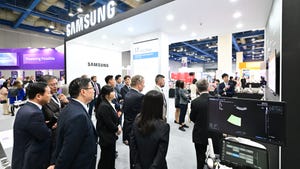
NEW YORK -- If you've ridden the subway in midtown New York City recently you may have been pleasantly -- or perhaps unpleasantly -- surprised to find that you can now get connected over 4G or WiFi down there.
The source of this connectivity is housed on a factory loft floor in an unassuming building on the west side of 30th Street in the Big Apple. Within its white walls stands a welter of wireless, WiFi, and optical equipment designed to bring the Web, email, and voice calls to users waiting for their trains. (See 4G LTE Grows (Above & Below).)
For this is the home of the first Transit Wireless LLC basestation hotel. Click on the image below to see more:
Figure 1: 4G to the C Train  3G, 4G, and WiFi have started to arrive in Manhattan, thanks to Transit Wireless.
3G, 4G, and WiFi have started to arrive in Manhattan, thanks to Transit Wireless.
As it stands, AT&T Inc. (NYSE: T) and T-Mobile US Inc. have multi-frequency 3G and 4G cellular RF gear installed in the facility. AT&T has noticeably more equipment deployed than its Magenta rival. Boingo Wireless Inc. is the WiFi partner for the venture.
Verizon Wireless is due to deploy in the basestation hotel later this year. Sprint Corp. (NYSE: S) expects to hop on the subway service early in 2014. Once those carriers have deployed, the 30th Street location will be nearly full to the brim. (See Verizon Onboard With NYC Subway Wireless.)
So, what's actually happening?
Transit Wireless is undertaking the five-year project in partnership with the MTA to design and deploy 3G and 4G LTE cellular and WiFi services in all 277 stations in the New York subway system.
Eventually the underground network will cover 20 million square feet of public space. Transit Wireless estimates it will deploy 7,000 multi-frequency distributed antennas (DAS) and 5,000 access points connected to the outside world by 350 radio nodes and 125 miles of fiber optic cable.
The first 36-station phase of the deployment in Manhattan is complete, covering stations in Chelsea, midtown, Times Square and up to 96th Street.
Phase two, building out midtown stations on the East Side and on into Queens, is expected to start in October and last six to eight months. Forty stations will be covered in the second phase.
Phase three will expand into Brooklyn.
Transit Wireless takes in the RF signal from mobile carriers in at its basestation hotel to convert the wireless signal into an optical transmission, which is sent to the connected stations over fiber and then to the user's device over WiFi access points or antennas deployed on the station's platforms and mezzanines.
The project will eventually require five to seven of these basestation hotels, depending on budget and build requirements as the deployment expands. "It would be too expensive to run fiber from here to Queens," explains George Pejovic, senior network engineer at Transit Wireless.
The project will eventually cover all of New York's boroughs, with the exception of almost subway-free Staten Island. "Nobody goes to Staten Island," quips Pejovic.
The nitty gritty
Carriers deploy RF equipment in the basestation hotel. Transit also originates the Boingo service from the building. RF signals are converted back and forth from wireless to optical at the facility.
Transit Wireless runs 12 strands of fiber into each station for the service. Six remain unused at the moment, the rest are split between WiFi, cellular and ensuring redundancy on the network. These six spares could later be used for other applications.
The fiber connects directly to WiFi access points. Transit Wireless uses APs from Motorola Solutions Inc. (NYSE: MSI)
There's another step for cellular. The fiber runs to a remote optical unit (ROU), which handles the final stage of conversion from optical and wireless and back, connected to the distributed antennas in the stations.
"Each station gets [at least] its own dedicated sector from the carrier," explains Sean Wang, senior RF engineer, about ensuring capacity for the busy subway system. "Times Square has five sectors."
Stations have a minimum of eight antennas and as many as 50 or 60 antennas installed at a location to provide enough coverage.
"What's challenging is designing for each station -- every situation is different," says Wang. Transit Wireless might need to provide coverage in a station that has both an extensive raised mezzanine and platforms while maintaining coverage and capacity.
— Dan Jones, Mobile Editor, Light Reading
About the Author(s)
You May Also Like












